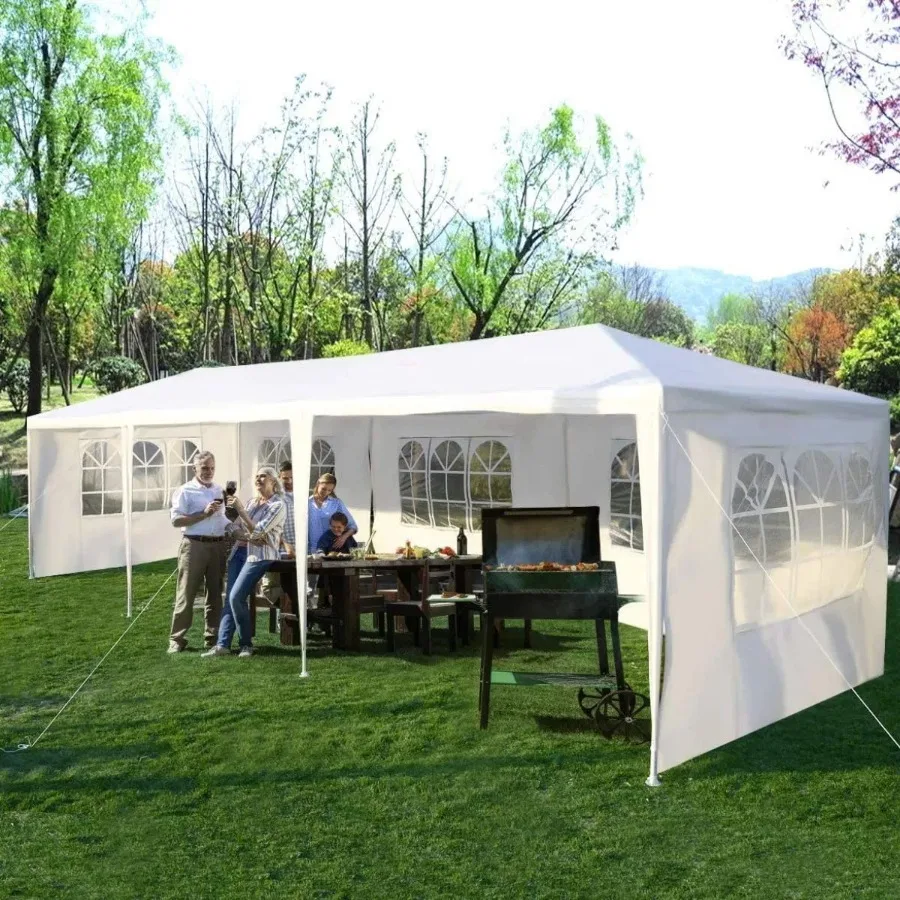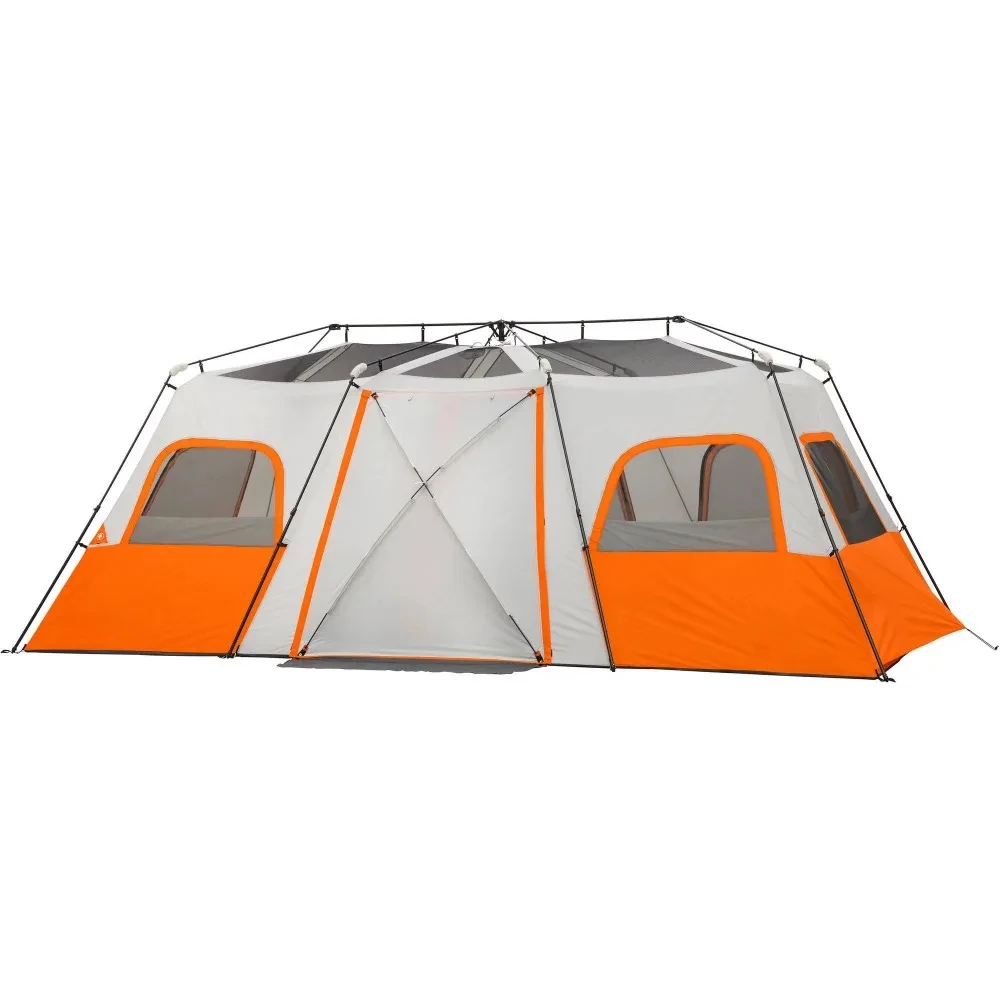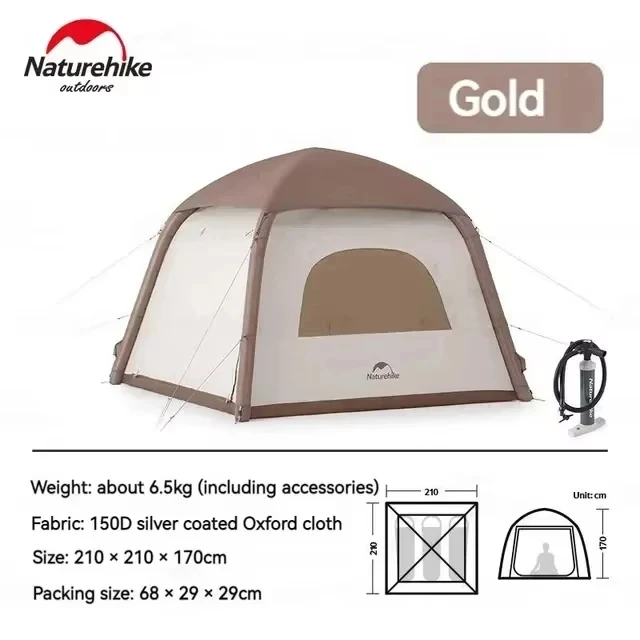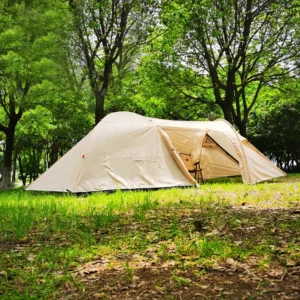When planning your next camping trip, understanding tent waterproof ratings might not seem like the most exciting topic—until you’re caught in an unexpected downpour. Knowing what those numbers on your tent packaging actually mean can make the difference between a memorable outdoor adventure and a soggy, miserable experience.
Decoding Hydrostatic Head Ratings: The Science Behind Waterproof Tents
Waterproof ratings, technically known as Hydrostatic Head (HH) measurements, are the standard way to determine how waterproof your tent fabric actually is. These ratings don’t just represent a vague promise of staying dry—they’re based on precise scientific testing.
The process works like this: manufacturers stretch a piece of tent fabric across the bottom of a clear tube. They then fill this tube with water and measure how tall the column of water gets (in millimeters) before three drops penetrate through the fabric. This height represents the fabric’s resistance to water pressure and becomes the hydrostatic head rating.
For example, a tent fabric with a 1500mm rating can withstand a 1500mm (about 59 inches) column of water pressing down on it before leaking. This scientific approach gives you a reliable metric for comparing different tents.
It’s important to understand that water-resistant and waterproof are not the same thing. Water-resistant fabrics can shed light moisture but will eventually let water through under pressure or during prolonged exposure. Truly waterproof fabrics, as measured by the HH rating, can withstand significant water pressure for extended periods.
When researching your next shelter, understanding these ratings is crucial—especially if you’re considering shelter options for two campers who both want to stay dry when the weather turns.
Waterproof Rating Scale: What the Numbers Mean for Your Camping Experience
Understanding what those HH numbers actually mean in practical terms can help you choose the right tent for your specific camping needs.
Here’s a breakdown of what different ratings mean for your camping experience:
| Waterproof Rating | Weather Resistance | Best For |
|---|---|---|
| Below 1000mm | Can resist light mist or very brief rain | Emergency shelters, fair weather summer use only |
| 1000mm-1500mm | Handles light rain for short periods | Weekend camping in mild conditions, summer use |
| 1500mm-3000mm | Stands up to moderate rainfall | 3-season camping, typical weather conditions |
| 3000mm-5000mm | Withstands heavy, sustained rainfall | Extended trips, challenging weather conditions |
| 5000mm+ | Handles severe storms and pressure | Mountaineering, expedition use, extreme conditions |
A 1500mm rated tent will keep you dry during a light shower, but might start to leak during several hours of steady rain. On the other hand, a 3000mm rated tent can typically handle about 4-5 hours of moderate to heavy rainfall without leaking, making it suitable for most typical camping conditions.
Industry standards typically recommend different ratings based on intended use. For example, many quality 3-season tents have flysheet ratings of 1500-3000mm, while winter or expedition tents often feature 3000-5000mm or higher.
Many campers wonder specifically is 3000mm waterproof enough for their trips, and for most recreational campers, the answer is yes—this rating provides excellent protection in most conditions you’re likely to encounter.
Higher Rating ≠ Better Tent: The Balance of Waterproofing and Performance
While it might seem logical that higher waterproof ratings are always better, this isn’t necessarily true. Extremely high waterproof ratings often come with significant trade-offs.
As manufacturers increase waterproof ratings, they typically do so by adding more coating to the fabric or using thicker materials. This leads to several potential drawbacks:
- Increased weight: Higher-rated fabrics generally weigh more, which is particularly important for backpackers.
- Reduced breathability: More waterproof usually means less breathable, potentially increasing condensation inside your tent.
- Lower tear strength: Some waterproof coatings can make fabrics more brittle and prone to tearing.
- Higher cost: Superior waterproofing technology typically adds to the tent’s price tag.
- Environmental considerations: Some waterproofing treatments contain chemicals that impact the environment.
For example, a super-waterproof 10000mm rated tent might keep every drop out, but could increase your pack weight by 1-2 pounds and create a sauna-like environment inside. Most campers find that moderate ratings offer the best balance—keeping rain out while maintaining other important performance characteristics.
This balance becomes particularly important when mastering two-person lightweight tent setup, where extra weight from excessive waterproofing could counteract the benefits of a lightweight design.
Component-Specific Waterproofing: Different Needs for Different Parts
A well-designed tent uses varying waterproof ratings for different components, optimizing performance where it matters most.
Flysheet/Rainfly: As the primary rain barrier, quality flysheets typically feature ratings between 1500-3000mm. This offers sufficient protection against rainfall while maintaining reasonable weight and breathability.
Groundsheet/Floor: The floor experiences much more pressure than the rainfly—when you kneel or place gear down, you’re pushing the fabric against wet ground with considerable force. This is why quality tent floors have much higher ratings—often 5000-10000mm—to prevent water from being forced through.
Inner Tent: Since the inner tent is protected by the rainfly, it’s usually made from breathable fabrics with minimal waterproofing. This enhances comfort by allowing moisture vapor to escape.
The science behind this differentiation is simple physics. When you lie down on a tent floor, your body weight creates pressure that can force ground moisture through the fabric. A 180-pound person kneeling concentrates weight in a small area, potentially creating pressure equivalent to a much taller water column than natural rainfall would produce.
Understanding these component differences becomes especially important when choosing the ultimate compact shelter for two, as you’ll want adequate protection in a smaller, more efficient package.

Beyond the Fabric: Critical Waterproofing Features That HH Ratings Don’t Show
While fabric waterproof ratings receive the most attention, they’re just one part of a comprehensive waterproofing system. Several other critical elements determine whether you’ll stay dry:
Seam Construction:
– Taped seams: Factory-applied waterproof tape covering needle holes
– Welded seams: Heat-bonded joints that eliminate needle holes entirely
– Sealed seams: Manually applied waterproof sealant
Zipper Protection:
– Storm flaps that cover zippers
– Waterproof or water-resistant zippers
– Zipper garages that shield zipper ends
Tent Geometry and Design:
– Rainfly coverage extending to or near ground level
– Adequate tension to prevent water pooling
– Sufficient slope for water runoff
– Proper ventilation to reduce condensation
Guy Line System:
– Strategic attachment points for stability in wind
– Proper tensioning to maintain rainfly shape during storms
A tent with moderate 2000mm fabric but excellent seam sealing and design might outperform a poorly designed 5000mm tent in actual field conditions. The best waterproof backpacking tents feature thoughtful integration of all these elements.
Additionally, many tents feature Durable Water Repellent (DWR) finishes on their outer surfaces. These treatments cause water to bead up and roll off rather than saturating the fabric. While DWR doesn’t affect the HH rating, it improves real-world performance by minimizing the water contact time with the fabric.
Waterproofing Materials and Longevity: PU vs. Silicone vs. PE Coatings
The type of waterproof coating used significantly affects both initial performance and long-term durability of your tent:
Polyurethane (PU) Coatings:
– Most common and economical option
– Initial waterproof performance: Good
– Longevity: 3-5 years with proper care
– Drawbacks: Can deteriorate with exposure to moisture, heat, and UV, becoming sticky or flaking off
Silicone Coatings:
– Premium option (often called silnylon or silpoly when applied to nylon or polyester)
– Initial waterproof performance: Excellent
– Longevity: 7-10+ years with proper care
– Drawbacks: Higher cost, typically cannot be factory seam-taped
Polyethylene (PE) Coatings:
– Common for groundsheets and heavy-duty applications
– Initial waterproof performance: Very good
– Longevity: Excellent
– Drawbacks: Heavier, less flexible, can be noisy
A tent’s waterproofing will inevitably degrade over time due to various factors. UV exposure can reduce waterproof ratings by approximately 50% after extended exposure, while physical abrasion, incorrect storage (especially when wet), and contamination from dirt and oils all accelerate degradation.
When shopping for waterproof camping tents, consider not just the initial rating but also the coating type which will determine how well that rating holds up over multiple seasons.
Matching Waterproof Ratings to Your Camping Style: A Practical Guide
Selecting the right waterproof rating requires understanding your specific camping needs:

Weekend Summer Camping in Fair Weather:
– Flysheet: 1000-1500mm is typically sufficient
– Floor: 2000-3000mm provides adequate protection
– Priority: Balance between comfort, weight, and basic protection
Regular 3-Season Camping:
– Flysheet: 1500-3000mm for reliable performance
– Floor: 3000-5000mm for good ground protection
– Priority: Versatility across a range of conditions
Alpine/Winter/Expedition Camping:
– Flysheet: 3000-5000mm+ for extreme conditions
– Floor: 5000-10000mm for extended exposure
– Priority: Maximum protection against harsh elements
Ultralight Backpacking:
– Flysheet: 1200-2500mm balancing weight and protection
– Floor: 2000-3000mm, possibly supplemented with a footprint
– Priority: Minimal weight while maintaining functional protection
Lightweight Backpacking Tent, Ultralight Backpacking Tent, Waterproof Backpacking Tent
$391.05 Select options This product has multiple variants. The options may be chosen on the product pageHeavy Duty 4 Season Tent, Mountaineering Tent, Winter Camping Tent
$870.40 Select options This product has multiple variants. The options may be chosen on the product pageCompact Backpacking Tent, Lightweight Backpacking Tent, Waterproof Camping Tent
$335.52 Select options This product has multiple variants. The options may be chosen on the product pageUltralight Backpacking Tent, Ultralight Dome Tent, Winter Camping Tent
Price range: $369.63 through $370.07 Select options This product has multiple variants. The options may be chosen on the product pageCamping Tent with Vestibule, Waterproof Camping Tent
Price range: $407.89 through $479.48 Select options This product has multiple variants. The options may be chosen on the product pageHeavy Duty 4 Season Tent, Ultralight Freestanding Tent, Winter Camping Tent
$3,722.66 Select options This product has multiple variants. The options may be chosen on the product page
Consider your camping location’s typical climate and altitude as well. Higher elevations often experience more intense precipitation and UV exposure, both of which demand higher waterproof ratings. Desert campers might prioritize UV resistance over extreme waterproofing, while those in the Pacific Northwest might want the highest ratings available.
For quick weekend getaways, waterproof pop-up tents with moderate ratings offer convenience while still providing adequate protection against typical showers.
Waterproofing Maintenance: Preserving Your Tent’s Performance
Maintaining your tent’s waterproof capabilities is relatively simple but essential for long-term performance:
Regular Cleaning:
– Gently clean with mild soap and water
– Avoid harsh detergents that can damage waterproof coatings
– Always rinse thoroughly to remove all soap residueProper Drying and Storage:
– Always dry completely before storage to prevent mildew
– Store in a cool, dry place away from direct sunlight
– Avoid compression for extended periodsReapplying Waterproofing:
– For PU-coated fabrics: Use a tent-specific waterproofing spray or wash-in treatment
– For silicone-coated fabrics: Use silicone-specific reproofing products
– Focus on high-wear areas and seamsSeam Maintenance:
– Regularly inspect seams for damage or deterioration
– Apply seam sealer to areas showing signs of wear
Following a proper waterproof gear care guide can extend your tent’s effective lifespan by many years. Watch for warning signs of failing waterproofing such as water no longer beading on the surface, dark patches where water is soaking into fabric, or visible wear on high-stress areas.
Frequently Asked Questions About Tent Waterproofing
Is there such a thing as a 100% waterproof tent?
No tent is truly 100% waterproof in all conditions indefinitely. Even the highest-rated tents can eventually leak under extreme or prolonged exposure. The goal is sufficient waterproofing for your specific conditions.
What’s the minimum waterproof rating needed for typical camping trips?
For most 3-season recreational camping, a flysheet rating of 1500-2000mm and a floor rating of 3000mm provide adequate protection. Increase these values for more challenging conditions or extended trips.
How can I tell if condensation is causing wetness rather than leaking?
Condensation typically forms evenly on interior surfaces, especially on the ceiling and upper walls. Leaks usually create distinct wet spots, often near seams, zippers, or where the rainfly contacts the inner tent.
Will a higher waterproof rating make my tent less breathable?
Generally, yes. More waterproof coatings typically reduce breathability, which can increase internal condensation. This is why 4-season winter 2-person tents use strategic ventilation to balance waterproofing with moisture management.
How often should I reapply waterproofing treatments?
This depends on usage frequency, storage conditions, and initial coating quality. As a general rule, check your tent’s waterproofing before each camping season and reapply treatments when you notice water no longer beading on the surface.

Expert Recommendations: Finding the Right Waterproof Balance
When choosing your next tent, remember that optimal waterproofing isn’t just about the highest numbers—it’s about finding the right balance for your specific needs. Focus on the entire waterproofing system rather than fixating solely on fabric ratings.
For most recreational campers, moderate waterproof ratings (1500-3000mm for flysheets, 3000-5000mm for floors) combined with quality construction will provide excellent performance while maintaining comfort, reasonable weight, and durability. Those facing extreme conditions should consider heavy duty 4-season tents with higher ratings and reinforced construction.
At Explore Elements, we understand that staying dry is a fundamental requirement for enjoying the outdoors. The perfect tent balances waterproofing with breathability, durability, and weight—because the best waterproofing is the kind you never have to think about while you’re making memories in the wilderness.







